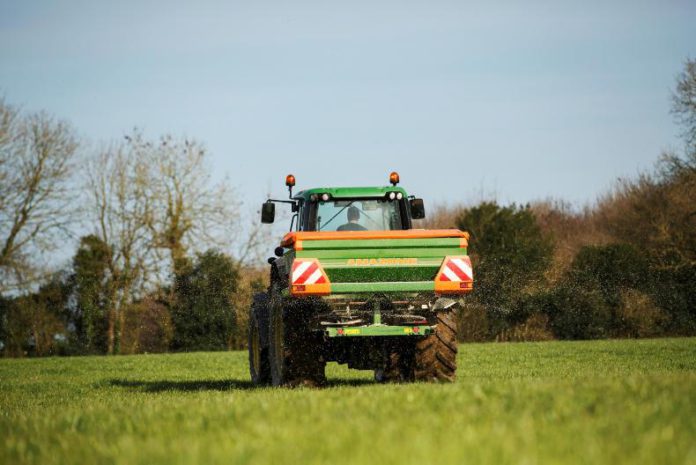In this news article, That’s Farming, takes a look at the use of a GPS-controlled spreader and/or sprayer, also known as AP5, in the DAFM’s new Eco-Scheme, which we previewed in this news article.
The use of a GPS-controlled spreader and/or sprayer is classified as agricultural practice five (AP5) in the new Eco-Scheme, which could carry a payment rate of circa €60-€65/ha, subject to farmer uptake.
According to the DAFM, the aim of this action is to reduce carbon emissions, reduce inputs, and reduce environmental impacts while assisting in the accurate and even application of inorganic compounds.
Under this action, farmers must apply all chemical fertiliser (compound or liquid) and/or plant production products with a GPS-controlled spreader or sprayer.
When submitting your application, you must declare if you are utilising your own machine, or using an agricultural contracting service, the latter for which you must provide the contractor’s name.
If you are utilising your own machine, you must submit this information to the DAFM and applicants using their own GPS-controlled sprayer to spray plant protection products must themselves be a trained professional user.
Meanwhile, in the case of using an agricultural contractor, you must have detailed invoices with details of the contractor along with detailed receipts which are legible, on supplier-headed paper, include the supplier’s name and address, date of sale, applicant’s name and address and quantity of fertiliser of plant protection products purchased and dates of application.
The DAFM has highlighted that all documentation – including receipts – must be retained for possible on-the-spot inspections.
A failure to adhere to the above terms may result in an applicant being deemed ineligible for this agricultural practice.
Who is not eligible?
According to the scheme’s terms and conditions, which the DAFM has made available to the public, the practice is not open to herds with > 50% commonage and > 50% forestry or a >50% combination of both.
Organic farmers can commit to this action if they so wish and will have to spread organic material; they are prohibited, as per organic farming standards, to spread chemical fertiliser or chemical plant protection products.
Farmers with less than 50% of their BISS 2023 land area declared as arable are not eligible to select that they will satisfy this agricultural practice by using a GPS-controlled sprayer.
Moreover, there is also a minimum amount of product which you must use to qualify for this action, which is a minimum of one tonne of chemical fertiliser or a minimum of five litres of plant protection products must be spread using the specified spreader/sprayer.
All GPS-controlled sprayers must meet the specification that the DAFM has set out in the scheme’s terms and conditions.
A failure to use a DAFM-approved machine may result in no payment and/or a penalty, the DAFM has stressed.
The DAFM will check compliance with this practice for 2023 by inspecting receipts and requesting geotagged imagery, among other methods.
In a previous article, That’s Farming provided readers with an overview of the Eco-Scheme, which you can access via this link.





